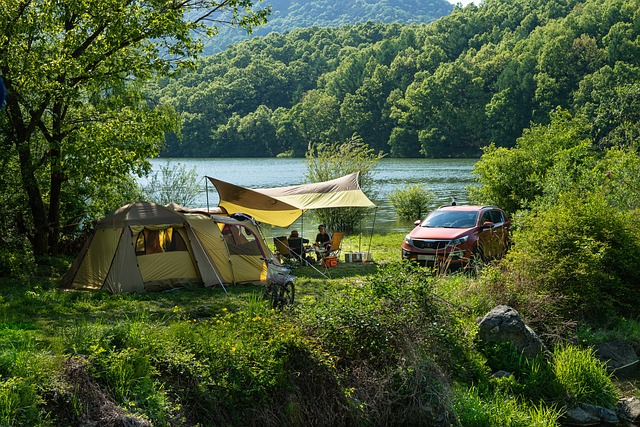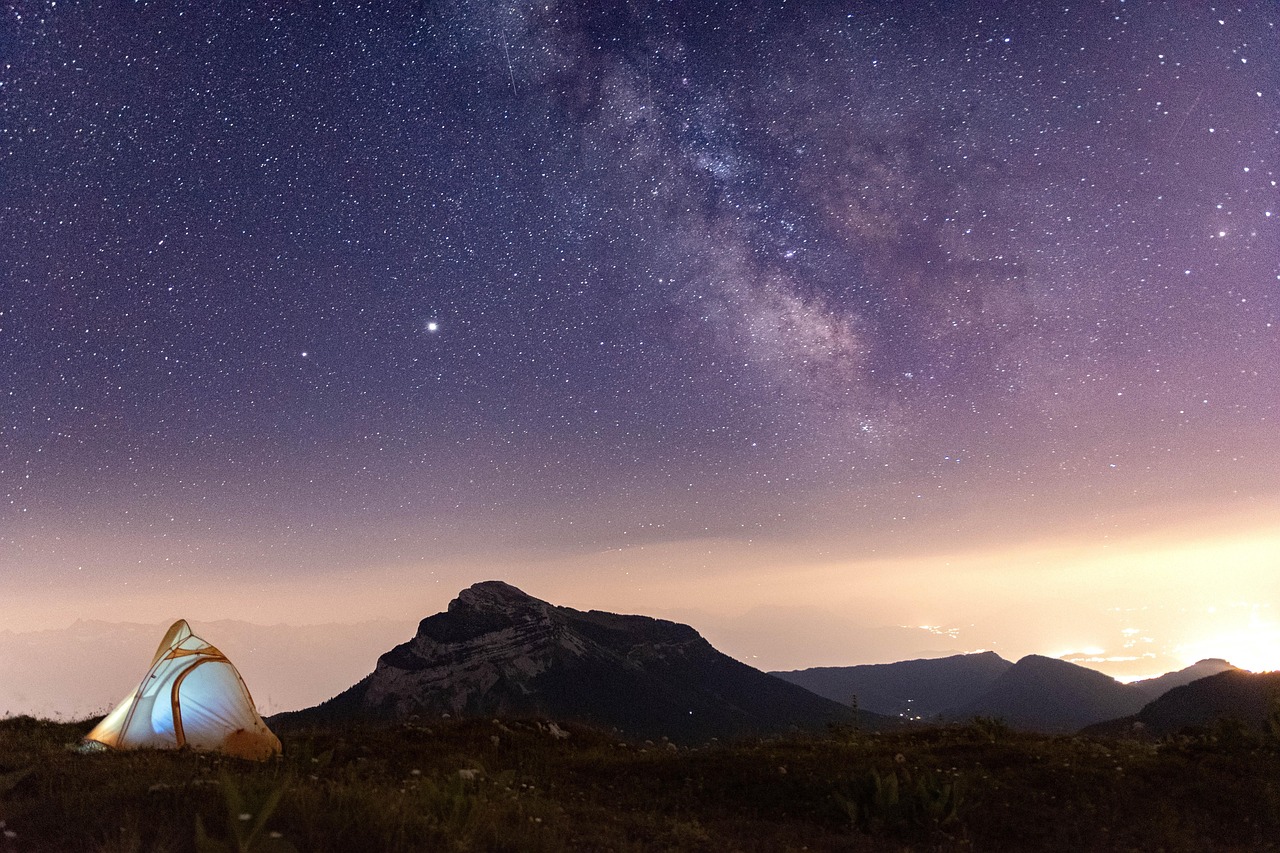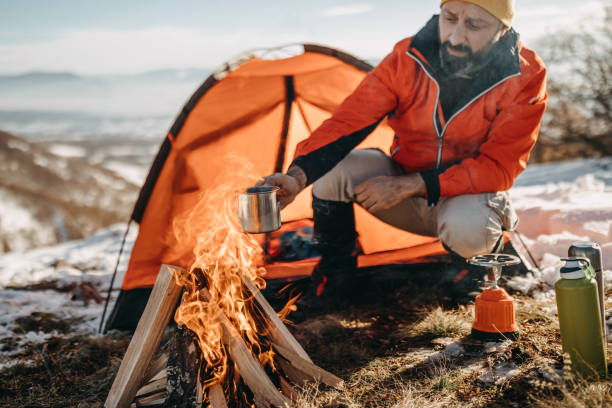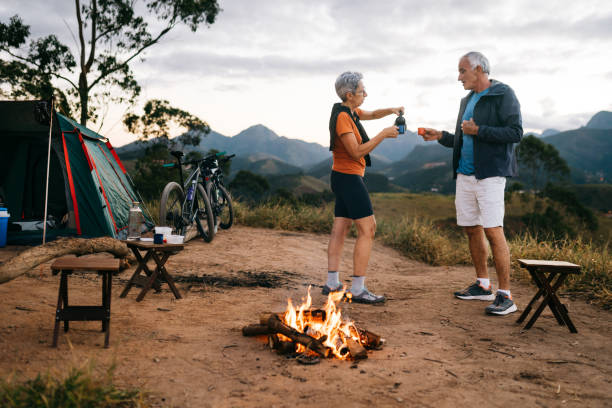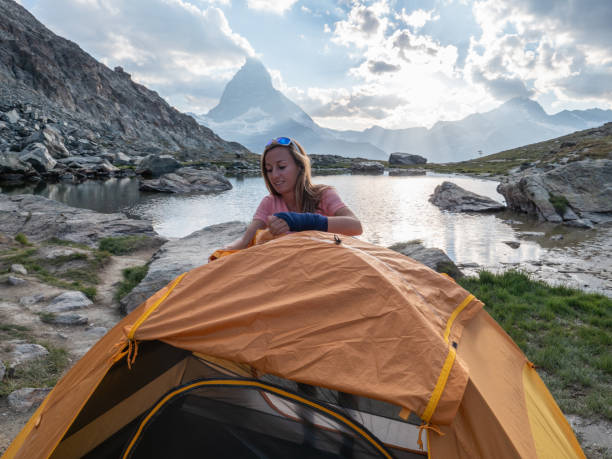There’s something uniquely satisfying about a car camping trip. No backpack weight limits, no minimalist gear packing—just the open road, your favorite trail mix, and the freedom to bring a tent that feels like a cabin in the woods. Over the past several months, we hit the road—across coastlines, forests, and high-altitude escapes—to put some of the most talked-about, the best tents for car camping to the test. And we didn’t just pitch them in ideal conditions—we camped through rain, wind, chilly nights, and even those sneaky summer thunderstorms that roll in like they own the place.
What we were looking for was simple: comfort, durability, and features that actually matter when you’re living out of your trunk for a few days. We tried out everything from roomy six-person shelters to snug domes perfect for a couple and their gear. Whether you’re planning a weekend with friends or an off-grid getaway with your dog, we’ve rounded up seven of the best car camping tents—and we’ve got the first hand stories to back it all up.
Let’s dive into the best tents for car camping that made our trips memorable—starting with one that truly felt like a second living room.
Table of Contents
- The North Face Wawona 6P
- Eureka! Car Camping Tent
- Wakeman Dome Tent
- ALPS Car Camping Tent
- Coleman Skydome Tent
- Kelty Discovery Backpacking Tent
- BISINNA Backpacking Tent
- Our Verdict!
- How to Choose the Best Tents for Car Camping
- Spacious Interior
- Weather Protection
- Easy Setup & Portability
- Do you need a tent for car camping?
- How can I make my car camping more comfortable?
- Which tent fabric is best?
7
The North Face Wawona 6P
We first rolled out the The North Face Wawona 6P on a three-day mountain getaway—part blue skies, part misty overcast, and one very wet night. From the get-go, this tent screamed comfort. The hybrid double-wall construction was the real MVP here: the large mesh front door paired with high ceilings gave us the kind of airflow you only dream of after a long day hiking. No musty tent vibes here.
Setup was painless, too. The color-coded poles and trims helped us pitch it before sunset without muttering at each other over confusing instructions. Inside, we could stand up straight—yes, fully upright—and even set up two camp chairs in the vestibule when the rain hit. Speaking of that vestibule: it’s massive. We stashed all our wet boots and packs out there, zipped it up, and stayed totally dry.
When the wind picked up and the rain came down, the Wawona didn’t flinch. Not a drop inside, no sagging walls, no frantic midnight adjustments. Just cozy, dry, and secure. It’s clear The North Face didn’t skimp on materials—the DAC MX pole set is sturdy, yet surprisingly light.
This large car camping tent made us feel like we were glamping, even when the skies tried to dampen the mood.
Also, watch this detailed review of the product by TACOMANZ on YouTube!
Pros:
✅ Extra-large vestibule for gear storage
✅ High peak height — feels like a cabin inside
✅ Rugged and weather-resistant materials
Cons:
❌ Bulky when packed — takes up trunk space
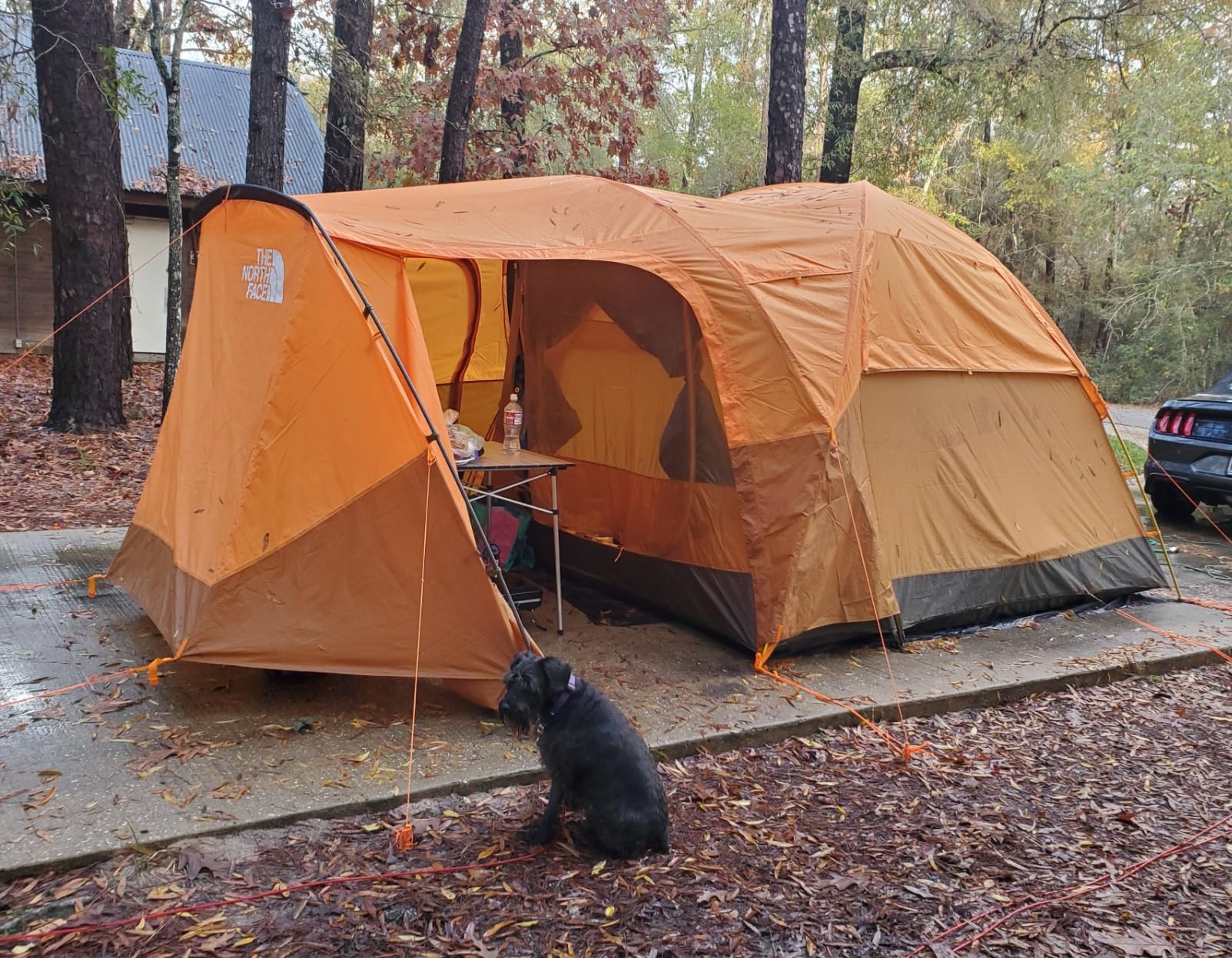
6
Eureka! Car Camping Tent
The Eureka! Car Camping Tent came along for a fall family trip in the woods, and it straight up felt like a portable cabin. Right off the bat, the nearly vertical walls were a game changer—we had air mattresses, gear bags, and still enough space to lounge around without bumping elbows. My partner even joked it felt bigger than our guest bedroom back home.
We were pleasantly surprised by how easy it was to set up solo. The steel and fiberglass pole combo, along with the sleeves and hubs, made it stable and intuitive. Once inside, we cracked open those big mesh windows and got an unbeatable view of the golden autumn leaves while staying cool and comfy.
A light drizzle one morning didn’t phase the extended fly or the waterproof curtains. Everything stayed dry, including the dog bed in the corner. Bonus points for the E! Powerport—we ran an extension cord to charge phones and even powered a small heater on one crisp night. Just remember, the tent’s bathtub-style floor needs a slightly smaller footprint or groundsheet to avoid water pooling underneath (a pro tip from a fellow camper that saved us a headache).
This one’s ideal if you want to blend car camping with a little tech-savvy coziness.
Pros:
✅ Tall interior — great for standing room
✅ Air Exchange system offers solid ventilation
✅ Best 4 person tent for car camping
Cons:
❌ Rainfly doesn’t extend fully to the ground
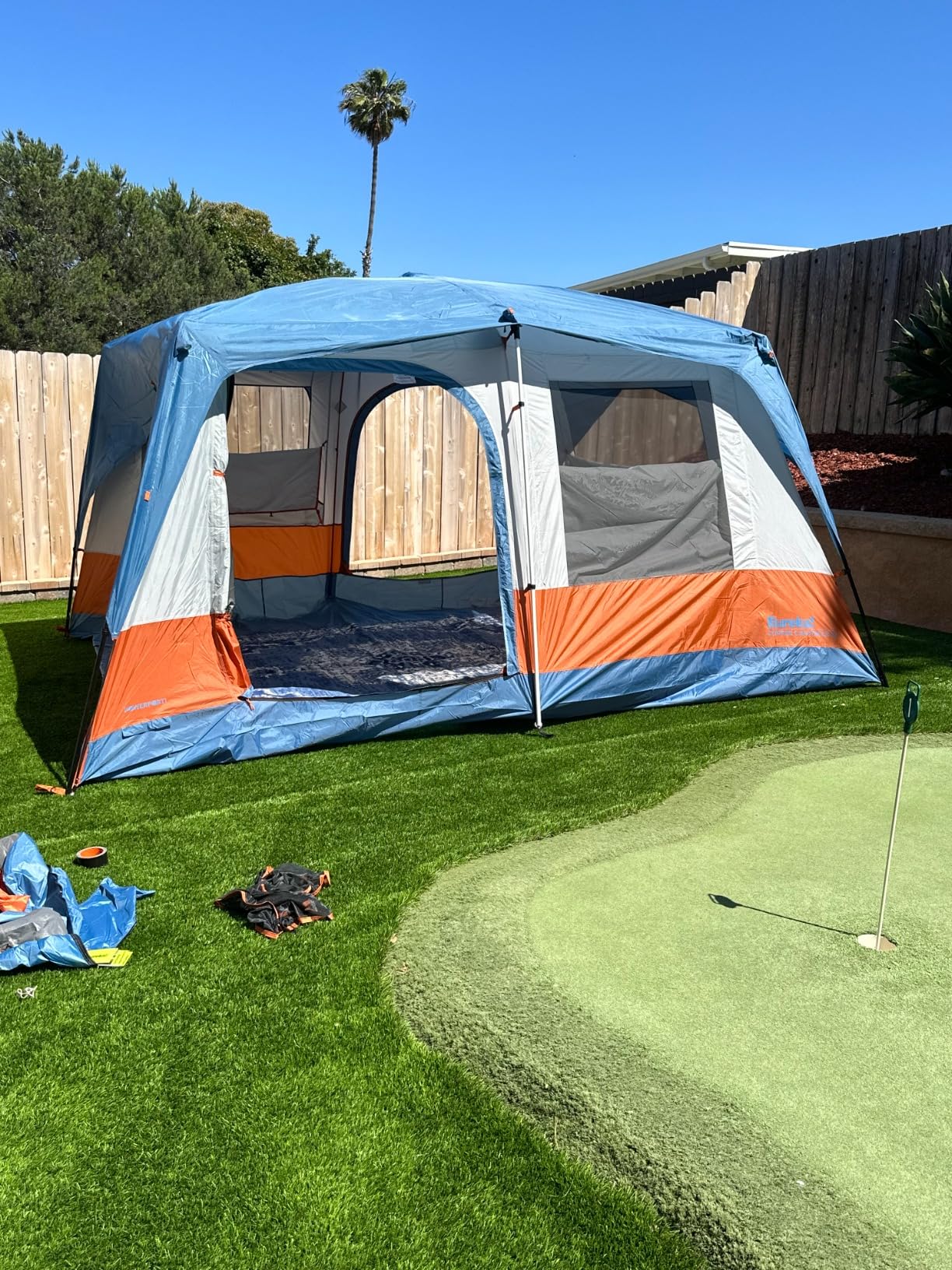
5
Wakeman Dome Tent
Easiest Setup. For a quick weekend at the lake, we tossed the Wakeman Dome Tent in the trunk and hit the road. It’s compact, light as a feather, and sets up faster than a campfire story turns into a ghost tale. Just a few poles, a clip here, a stake there—and boom, home sweet dome.
Even though it’s billed as a two-person tent, it didn’t feel cramped. We slid in a queen-size air mattress, still had room for our packs, and the interior pocket and gear hook kept things tidy. One night, the kids pulled the rainfly off on a whim to stargaze from inside—we just lay back and watched the sky twinkle through the mesh ceiling.
The rainfly, while small, worked like a charm during a light sprinkle. Everything inside stayed bone-dry. The PU-coated polyester floor felt tough enough for several seasons of weekend getaways. Yes, the material’s thinner than high-end models, but it held its own with no rips, leaks, or fuss.
This tent’s a winner for quick trips or casual campers who want comfort without all the bells and whistles.
Check out the 7 Best Camping Tents for Beginners: What to Look for in Your First Tent?
Pros:
✅ Lightweight and easy to carry
✅ Budget-friendly option for casual campers
✅ Quick setup for short trips
Cons:
❌ Not ideal for heavy rain or strong winds
4
ALPS Car Camping Tent
Best Sturdiness. We hauled the ALPS Car Camping Tent on a breezy trip out West where the wind means business—and this thing did not back down. Pitching it was smooth thanks to the free-standing two-pole aluminum design. It took maybe ten minutes, and then we stood back and admired its solid stance, even as the wind rolled through.
Inside, the layout just made sense. Dual entry points saved us the crawl-over maneuver in the middle of the night, and the two vestibules were perfect for keeping muddy boots and bags outside without getting soaked. The interior mesh pockets and gear loft made it easy to stay organized—especially on that one night we were forced inside by gusts and cold.
We’ve used this tent in everything from 50 mph winds to sub-20° F nights, and it’s never let us down. No condensation inside, no leaks, no worries. It’s not the lightest tent, but if you split it among a group, it’s no big deal to pack. And in cooler temps? This tent’s a fortress.
The ALPS car camping tents have officially earned a permanent spot in our gear stash—it’s just that dependable.
P.S. Browse the official website of the brand for more interesting options.
Pros:
✅ Heavy-duty build handles rough weather
✅ Easy clip-on assembly system
✅ Extra space with gear loft and storage pockets
Cons:
❌ On the heavier side for transport
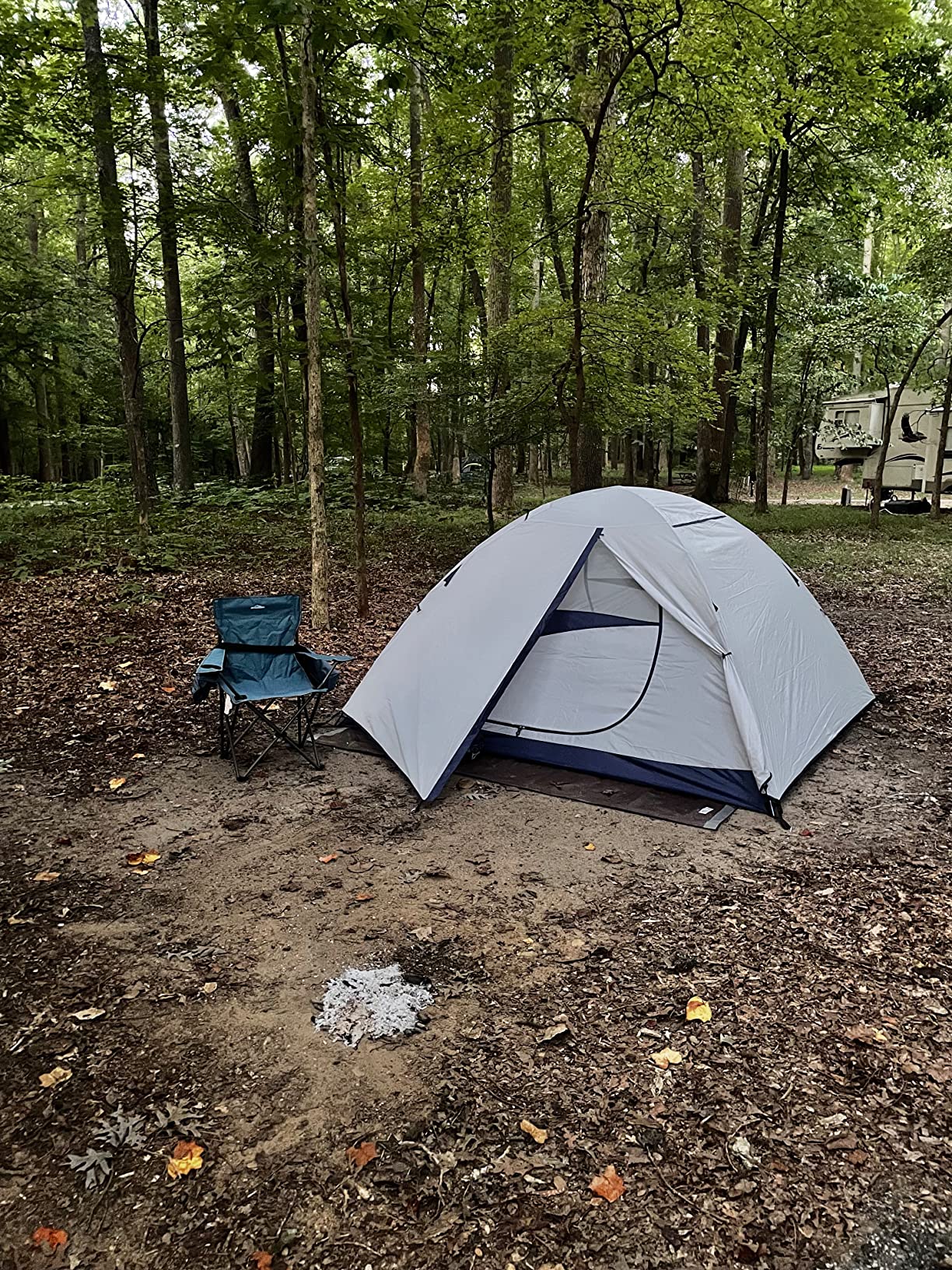
3
Coleman Skydome Tent
I’ll be the first to admit, I’ve never been a fan of traditional tent camping. After years of rolling with a cozy VW camper van, switching back to tents felt like downgrading from a king-size bed to a sleeping bag in a broom closet. But after some soul-searching (and pandemic-driven cabin fever), I figured it was time to give tents another try — and that’s how I stumbled on the Coleman Skydome Tent.
Setting it up was nowhere near the rage-inducing experience I feared. With its pre-attached poles, the Skydome took just about 15 minutes with two people, and honestly, next time it’ll probably be faster now that I’ve figured out how to pack it back into its carry bag. No wrestling match required.
What truly sold me? The blackout feature. You don’t realize how much you miss sleeping past sunrise until you’re not woken up by blinding rays at 6:00 a.m. And the nearly vertical walls gave us 20% more headroom, so I could actually sit up without bonking my head. At 4 ft. 8 in. tall, it’s not a stand-up-and-dance kind of tent, but it’s shockingly roomy for its size.
Plus, I loved the wider door — no more awkward shuffling of air mattresses or bags through tight zippers. The WeatherTec system held its own against an unexpected overnight rainstorm. Not a drop came in, and the tub-like floor with welded corners really did its job. It even stood strong in some decent wind gusts — tested for up to 35 mph winds, and I believe it.
This car camping tent changed my tune on camping — it’s not quite van life, but it might just be the next best thing.
Pros:
✅ Blackout fabric lets you sleep past sunrise
✅ Wider door makes gear access easier
✅ Excellent headroom for a dome-style tent
Cons:
❌ Poles can be tricky to pack back neatly
2
Kelty Discovery Backpacking Tent
If you’re like me and you’ve spent enough nights wrangling with zippers and complicated pole systems in the dark, you’ll appreciate just how refreshing the Kelty Discovery Backpacking Tent is. This tent is a gem for group backpacking trips, when you’re trying to pack light but still want comfort and coverage for the crew.
One of the things I loved most was how stupidly simple the setup was. Thanks to Kelty’s Quickcorners and X-pole frame, the car camping tent came together in minutes — no head-scratching or pole puzzles. The shark mouth duffel made takedown just as easy (finally, a storage bag that doesn’t require origami skills).
Weight-wise, this thing is a win. You get plenty of space per camper, yet it’s still lighter than carrying two or three smaller tents. My buddy dubbed me “tent guy” on our last trip, and this one saved me from hauling around a small condo on my back.
The 58–68 inch peak height gave us space to move without crouching, and I appreciated the large D-door for easy in and out — especially with muddy boots. Internal pockets were perfect for keeping essentials off the floor (because no one likes fumbling for a flashlight at 2 a.m.).
A few caveats: the floor is pretty thin, so I’d recommend a ground tarp or footprint to prevent wear, especially if you’re using a cot. And yeah, zippers can snag, but that’s pretty par for the course with tents.
For what you get — light weight, room for gear and bodies, and solid protection from wind and wet — the Discovery makes group trips a whole lot easier.
Feel free to browse the official website of the brand for more interesting options.
Pros:
✅ Lightweight for group backpacking
✅ Roomy interior with great headspace
✅ Quick-corner setup system is a time saver
Cons:
❌ Thin floor requires extra ground tarp
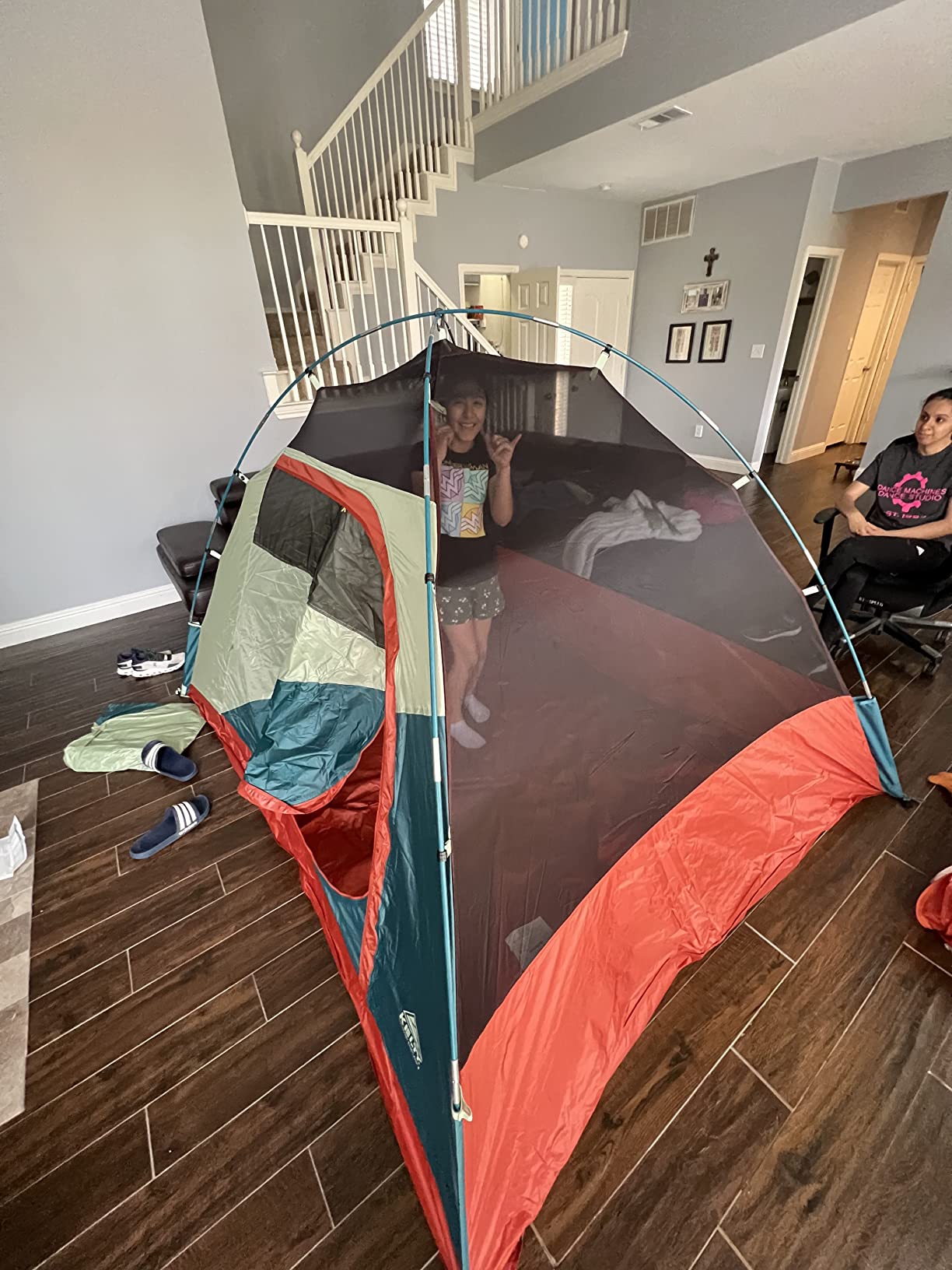
1
BISINNA Backpacking Tent
Best Overall. Let me tell you about a tent that’s gone toe-to-toe with Icelandic winds, Norwegian rain, Georgia mountain cold, and Florida humidity — and somehow still looks good. The BISINNA Backpacking Tent has become my go-to for two-person camping when conditions range from “chill” to “are we really doing this?”
At under 5 lbs, it’s not ultralight, but for a tent that comfortably fits two grown adults (without spooning unless you want to), it’s a total score. Setup is straightforward, even solo. The two aluminum poles make pitching a breeze, and the dual D-shaped doors mean no crawling over your tent mate when nature calls at 2 a.m.
One of my favorite features? Breathability. This tent has great ventilation thanks to the no-see-um mesh panels, which kept us cool and bug-free even in Florida’s muggiest months. On windy ridgelines and soggy trails, the PU2000mm waterproof rainfly held up incredibly well — though I did have to tie down a broken buckle once (but hey, that’s camping).
After three years of abuse — from backpacking the Hornstrandir wilderness in Iceland to weekend trips in the South — it still holds strong. I gave it a fresh waterproof spray this season, and it’s good as new.
If you’re looking for a versatile, tough, and budget-friendly backpacking tent, BISINNA is a sleeper hit. It’s been through hell and high water — literally — and I’d take it out again without a second thought.
You may also be interested in the Nylon Tents for Camping: Lightweight, Tough, and Trail-Ready!
Pros:
✅ Sturdy in wind and rain — great for all-weather use
✅ Easy for one person to set up
✅ Packs small and weighs under 5 lbs
Cons:
❌ Buckles may wear over time with heavy use
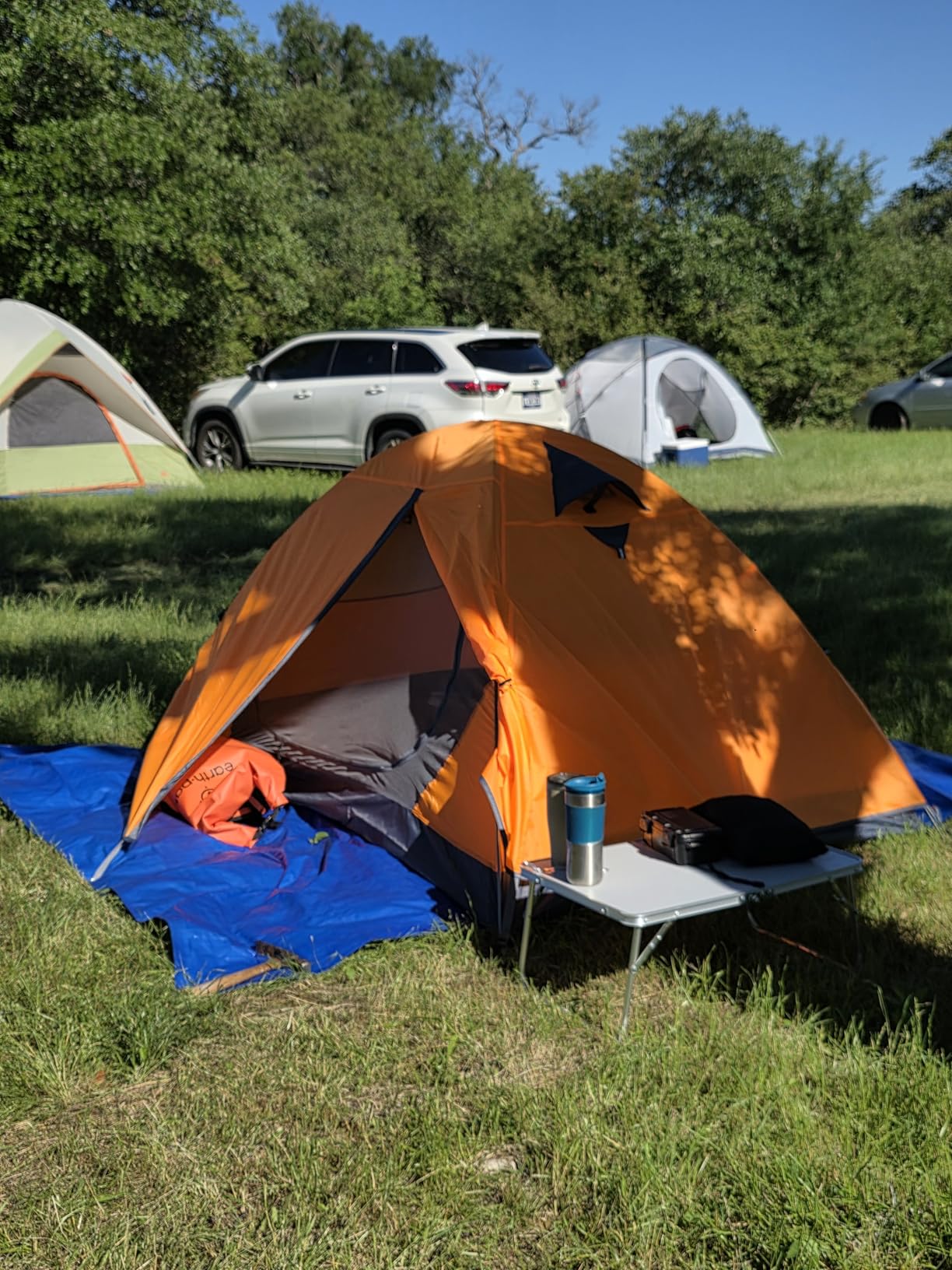
Our Verdict!
From the above roundup of the best tents for car camping, we chose the BISINNA Backpacking Tent as the Best Overall option because of its amazing performance, user-friendliness, and value for money. Apart from that, there are two other options that we set aside based on one specific feature for each. Let’s see them below.
- Best Sturdiness: ALPS Car Camping Tent
- Easiest Setup: Wakeman Dome Tent
How to Choose the Best Tents for Car Camping
Car camping is all about comfort meets convenience. You’re not worried about shaving ounces from your pack — you’ve got a vehicle to haul your gear. That means you can afford to go bigger, roomier, and more feature-packed with your car camping tent. Whether you’re setting up for a weekend in the woods or pulling into a scenic national park for a few nights under the stars, the top car camping tents can turn a basic campsite into a cozy home away from home.
So, how do you pick the best one? Here are three key features to look for:
🏕 1. Spacious Interior (Because Elbow Room Matters)
Forget squeezing into tight corners — car camping tents should offer enough room to stretch out, stand up, and even fit a queen-sized air mattress. Look for vertical walls, high peak height, and a generous floor plan. A tent with a center height of 5+ feet and space for gear storage or cots makes all the difference, especially if you’re riding out a rainy day inside.
🌦 2. Weather Protection You Can Trust
You might not be backpacking through a storm, but you will want your tent to hold up against surprise rain and gusty winds. A car camping tent with taped seams, tub-style floors, and a full-coverage rainfly keeps you dry and cozy. Bonus points for tents that have been wind-tested or come with reinforced frames — because waking up in a collapsed tent is no one’s idea of a good morning.
🚪 3. Easy Setup & Portability
Even when you’re not far from the car, nobody wants to wrestle with a tent that takes an hour to set up. Look for models with pre-attached poles, color-coded clips, or hubbed systems that simplify the process. And since you’re probably bringing a lot of gear (coolers, chairs, coffee setups), make sure the packed size fits well in your trunk and doesn’t hog all your cargo space.
Do you need a tent for car camping?
Yes, you typically need a tent for car camping unless you’re sleeping directly in your vehicle. A tent gives you more space to stretch out, store gear, and enjoy the outdoors while still having shelter from weather and bugs. It’s especially useful for families or groups who need extra room outside the car.
How can I make my car camping more comfortable?
To make your car camping more comfortable, focus on cozy sleeping arrangements—use a quality sleeping pad or air mattress and bring your favorite pillows and blankets. Add ambient lighting like LED string lights, and pack a foldable table and comfy camp chairs. Keep things organized with bins or gear organizers, and don’t forget bug spray, a good cooler, and maybe a small fan or heater depending on the season. A little prep goes a long way in turning your car camp into a cozy home base.
Which tent fabric is best?
The best tent fabric depends on your camping needs, but ripstop nylon is generally considered the top choice for most campers. It’s lightweight, durable, quick-drying, and resistant to tearing—perfect for backpacking and all-weather use. Polyester is a close second, offering better UV resistance and less sagging when wet, making it ideal for car camping and sun-heavy conditions. For extreme durability, canvas (cotton) is strong and breathable, but it’s heavier and takes longer to dry.
